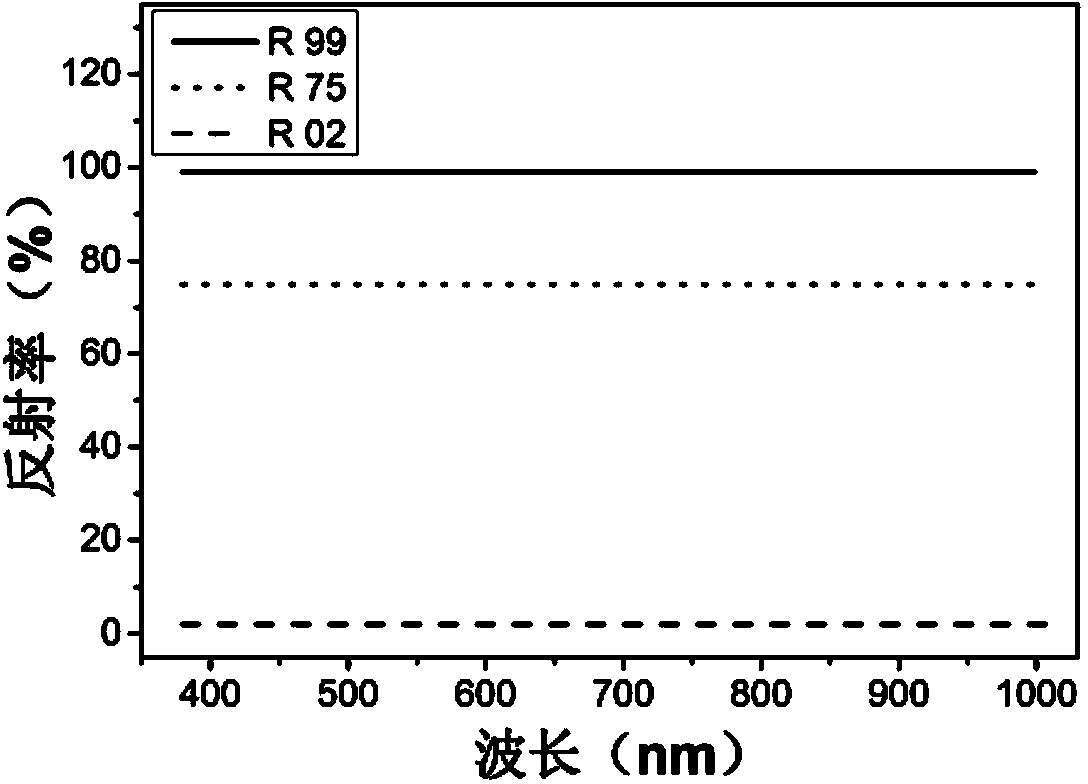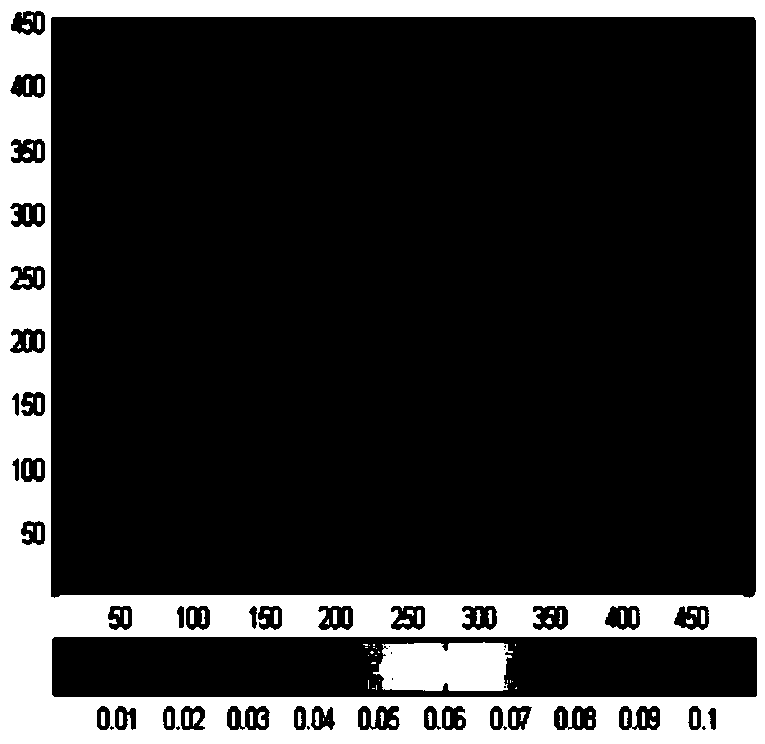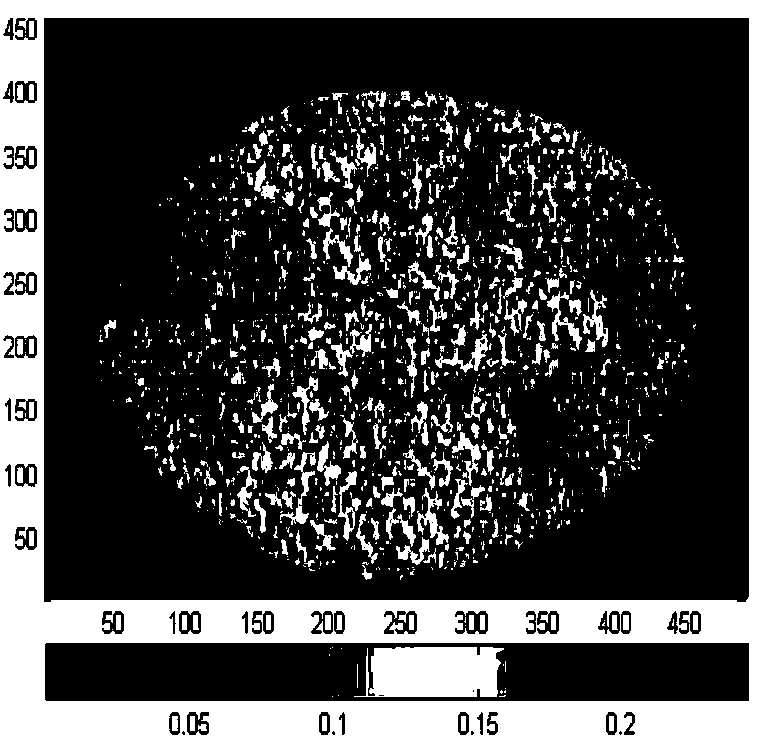Method for detecting pesticide residue on surface of navel orange based on hyperspectral imaging technology
A pesticide residue, hyperspectral imaging technology, applied in the field of pesticide residue detection, can solve problems such as environmental pollution, and achieve the effect of reducing environmental pollution, saving time, and not polluting the environment
- Summary
- Abstract
- Description
- Claims
- Application Information
AI Technical Summary
Problems solved by technology
Method used
Image
Examples
Embodiment 1
[0036] (1) Establish the relationship between gray value and reflectivity of single-band spectral image
[0037] 1-a. Collect the reference single-band spectral images of three diffuse reflectance standard plates at eleven characteristic wavelengths (each diffuse reflectance standard plate collects a reference single-band spectral image at each characteristic wavelength), and obtain each The gray value of a reference single-band image.
[0038] In the entire visible and near-infrared spectrum, the diffuse reflection standard plate used corresponds to the reflectivity of 99%, 75%, and 2%, such as figure 1 As shown, the diffuse reflections of the three diffuse reflection standard plates in the entire visible and near-infrared spectral range are different from each other. For each diffuse reflection standard plate, the reflectivity at all wavelengths is the same.
[0039] 1-b. For each characteristic wavelength, linearly fit the gray value of the corresponding reference single-band imag...
PUM
 Login to View More
Login to View More Abstract
Description
Claims
Application Information
 Login to View More
Login to View More - R&D
- Intellectual Property
- Life Sciences
- Materials
- Tech Scout
- Unparalleled Data Quality
- Higher Quality Content
- 60% Fewer Hallucinations
Browse by: Latest US Patents, China's latest patents, Technical Efficacy Thesaurus, Application Domain, Technology Topic, Popular Technical Reports.
© 2025 PatSnap. All rights reserved.Legal|Privacy policy|Modern Slavery Act Transparency Statement|Sitemap|About US| Contact US: help@patsnap.com



